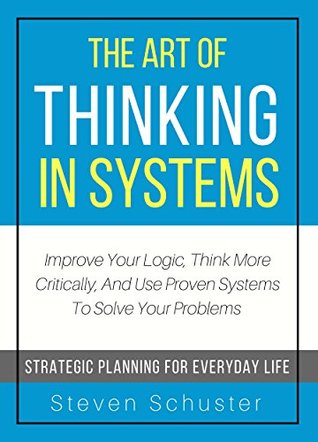More on this book
Kindle Notes & Highlights
Read between
May 7 - May 12, 2018
The third horseman is defensiveness. We get defensive when we feel like we are being unfairly attacked by our significant other. We come up with reasons and excuses to get them to back off. It often has the opposite effect than what we intended, though, as the other party sees it as a dismissal of their concerns and a way of shifting the blame to them. This only serves to further entrench the cycle of negativity.
The last horseman is stonewalling. Stonewalling happens when one partner shuts themselves off from the other, refusing to listen or engage in the interaction anymore. This makes communication impossible. It is essential to get rid of these four terrible communication styles and replace them with more positive ones in order for our relationships to thrive.
When we stop and look at things from a systems perspective, we take our power back and begin to feel hopeful again. Look for any changes that may have happened recently and try to identify whether they happened on the level of interconnections, or function. The elements in a relationship’s case are you two – and whoever is closely affecting your relationship.
Keep in mind that no one partner is to blame for everything that goes wrong, including yourself.
Everything runs on three different categories: physical, mental, and emotional.
Systems thinking at its core starts with observing data and events, looking for patterns in behavior that occur over time, uncovering the structures that are the driving forces behind the behavior, studying and changing the structures that are no longer helpful, using our curiosity to be open to a variety of possible solutions to a problem, and ultimately being brave enough to choose the best possible long-term solution rather than an easy fix, or just the one that is the most popular.
When we know better, we do better.
When should we use systems thinking? Systems thinking is very effective in helping to solve a variety of complex problems. If the concern is important, the problem has occurred repeatedly and has a history that can be studied and analyzed, and people have tried to solve the problem in the past with little or no success, it is a prime candidate for a systems thinking approach.
How do you use systems thinking?[lv] Begin by asking new questions.
When you begin your systems thinking analysis, it is entirely possible that the data and information before you will just be
the tip of the iceberg. There is so much more that you can discover beneath the surface by examining not just events that occur, but also patterns of behavior and the structure in place responsible for driving those behavior patterns over time.
Be sure to speak with everyone in the system so that all of their viewpoints are represented. In the beginning, everyone will see the problem through a different lens. It is only by being willing to listen to all perspectives that you can truly get to the heart of the problem. Once you have gathered all of the information you need, then you will ultimately update everyone as to your findings so that is possible to all be on the same page moving forward.


